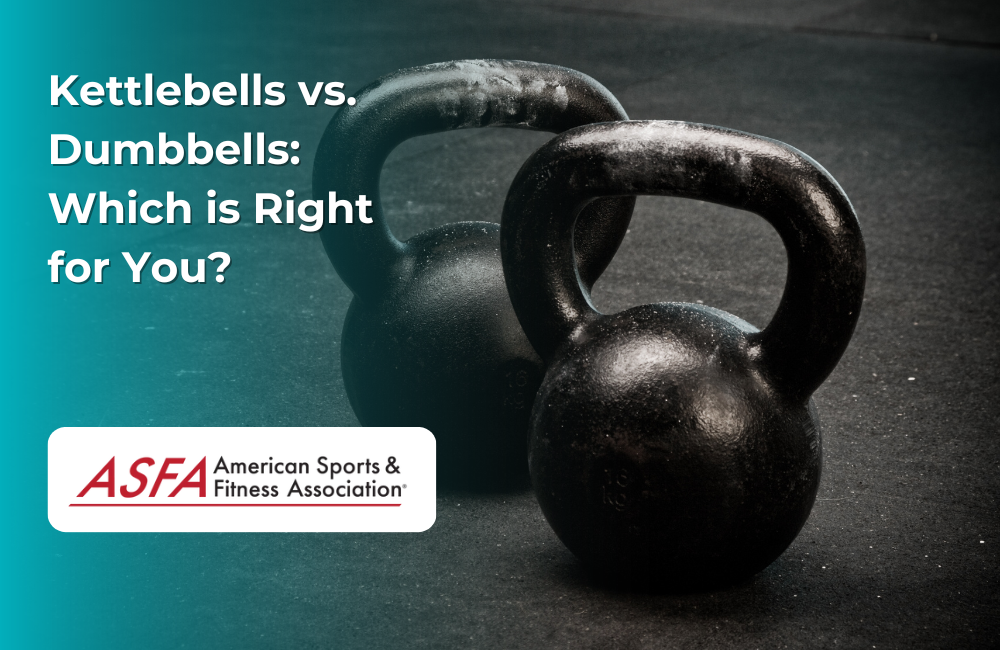When it comes to strength training, both kettlebells and dumbbells are highly effective tools, each offering distinct advantages. But how do you decide which one is right for your fitness goals? The debate of dumbbells versus kettlebells often centers on their differences in muscle activation, particularly during exercises like the seated overhead press. While both types of equipment can help build muscle, burn calories, and improve overall fitness, they have key differences in how they engage muscles, the exercises they’re suited for, and the type of training experience they provide.
In this blog, we’ll dive into the unique benefits of kettlebells and dumbbells, helping you determine which one aligns best with your fitness objectives.
What Do Kettlebells and Dumbbells Have In Common?
Kettlebells and dumbbells share several commonalities that make them both indispensable tools in the world of weight training. Both are types of free weights, offering a versatile range of exercises that can be tailored to any fitness level. Whether you’re performing a kettlebell swing or a bicep curl, both tools can be used in high-intensity resistance training (HIRT) routines, which are excellent for boosting cardiovascular fitness and building muscle strength.
One of the greatest advantages of both kettlebells and dumbbells is their accessibility. They are reasonably priced and can be easily stored in a home gym, making them perfect for those who prefer to work out at home. Additionally, both types of equipment are highly effective for improving overall fitness, whether you’re aiming to increase muscle mass, enhance endurance, or improve functional strength.
Kettlebells: Dynamic Training for Functional Strength
Design, Shape, and Weight Distribution
Kettlebells are unique in their design—circular weights with a sturdy handle. An adjustable kettlebell offers versatility by replacing multiple traditional kettlebells, making it a space-saving fitness solution. This design allows for a wide range of dynamic, compound movements that engage multiple muscle groups at once. Unlike dumbbells, which have a balanced weight distribution, the kettlebell’s offset center of mass shifts during movements, creating a constant challenge for your stability and coordination.
Key Benefits:
-
Dynamic Movements: Kettlebells are ideal for exercises like swings, snatches, Turkish get-ups, and cleans. These movements train your entire body, requiring balance, coordination, and core strength.
-
Functional Strength: Kettlebell exercises often mimic real-life movements, improving functional fitness by training muscles to work together, as they do in everyday activities.
-
Cardio and Strength Combined: The fast-paced nature of many kettlebell exercises, like swings, combines strength training with cardiovascular benefits, making it an efficient way to burn calories while building muscle.
Ideal For:
-
Those looking to improve functional strength, endurance, and flexibility.
-
Individuals who enjoy fast-paced, full-body workouts.
-
Athletes seeking improved coordination, core stability, and explosive power.
Full-Body Engagement with Kettlebell Swings
One of the major advantages of kettlebells is the full-body engagement they offer. Kettlebells are particularly suitable for explosive exercises, which are crucial for power-based training. Movements like kettlebell swings and cleans recruit your legs, hips, back, and shoulders, while also demanding core stability. This makes kettlebell training an incredibly efficient way to work multiple muscle groups simultaneously.
Popular Exercises:
-
Kettlebell Swing: This foundational movement targets the hamstrings, glutes, core, and shoulders, while also boosting cardiovascular endurance.
-
Turkish Get-Up: A full-body movement that improves mobility, coordination, and strength, particularly in the shoulders and core.
Core Stability and Coordination
Because kettlebell movements involve swinging or transitioning the weight around your body, they challenge your core muscles and improve coordination. The constantly shifting center of gravity in many kettlebell exercises forces your body to stabilize itself, engaging your core and improving balance.
Dumbbells: Precision and Control for Targeted Strength
Design, Simplicity, and Adjustable Dumbbells
Dumbbells have a simpler, balanced design with equal weight distribution on both sides of the handle. This makes them easier to control, especially for isolation exercises where you want to target specific muscle groups without incorporating too much coordination or balance.
Key Benefits:
-
Precision and Control: Dumbbells offer more control than kettlebells, making them ideal for beginners or for those focusing on specific muscle groups.
-
Targeted Muscle Training: Dumbbells are perfect for exercises that isolate certain muscles, such as bicep curls, chest presses, and lateral raises.
-
Versatility for Bodybuilding: If your goal is hypertrophy (muscle growth), dumbbells allow for precise movements with the ability to progressively overload muscles.
Ideal For:
-
Individuals focused on building specific muscles with more control.
-
Beginners who want to master proper form before adding dynamic movements.
-
Bodybuilders or those targeting muscle hypertrophy.
Isolation and Muscle Growth
Dumbbells are ideal for isolation exercises, allowing you to target specific muscle groups with controlled, precise movements. Using a lighter weight during these exercises can enable higher repetitions and an elevated heart rate, making it easier to achieve a cardio pump while engaging in strength training. This makes them a go-to tool for building muscle mass and improving strength in targeted areas.
Popular Exercises:
-
Bicep Curl: A staple exercise that isolates the biceps for strength and hypertrophy.
-
Dumbbell Bench Press: Great for building chest, shoulder, and tricep strength with full control over the range of motion.
Balanced, Steady Movements and Stabilizer Muscles
Dumbbells allow for steady, balanced movements, which can be especially beneficial when focusing on strength-building exercises that don’t require complex coordination. Dumbbells are particularly suitable for certain exercises due to their balanced weight distribution and handle design, making them ideal for movements that prioritize form and muscle engagement. This makes dumbbells perfect for slow, controlled lifting that focuses on form and muscle engagement, without the need for full-body coordination or explosive power.
Types of Kettlebells and Dumbbells
Both kettlebells and dumbbells come in various types, each offering unique benefits to suit different training needs and preferences.
Kettlebell Types
-
Standard Kettlebells: These are the classic kettlebells made of iron or steel, available in a range of sizes and weights. They are perfect for traditional kettlebell workouts and are a staple in many fitness routines.
-
Competition Kettlebells: Designed with a standardized size and weight, these kettlebells are used in functional fitness and other competitive sports. They feature a 5.5-inch base diameter, a 35 mm wide handle, and an 11.1-inch height, ensuring consistency in training and competition.
-
Adjustable Kettlebells: Ideal for those with limited space, adjustable kettlebells allow you to change the weight as needed. This versatility makes them a great option for varied kettlebell training without the need for multiple kettlebells.
-
Cast Iron Kettlebells: Known for their durability and traditional feel, cast iron kettlebells are a favorite among fitness enthusiasts. They offer a solid, reliable option for those who prefer a more classic approach to kettlebell workouts.
Dumbbell Types
-
Fixed Dumbbells: The most common type, fixed dumbbells are made from materials like steel, rubber, or chrome. They come in both round and hexagonal shapes, providing a stable and reliable option for a variety of exercises.
-
Adjustable Dumbbells: These dumbbells feature a dial or other mechanism to adjust the weight, making them perfect for those who want to save space. Adjustable dumbbells are ideal for a range of exercises, allowing for quick weight changes during workouts.
-
Loadable Dumbbells: With sleeves on either side for loading plates, loadable dumbbells are great for those who already own weight plates. They offer flexibility and the ability to customize the weight for different exercises.
-
Selectorized Dumbbells: These dumbbells allow you to select the desired weight with a simple mechanism, making them convenient for quickly changing weights during a workout. They are perfect for those who want to maintain the flow of their training sessions without interruption.
Incorporating both kettlebells and dumbbells into your workout routine can provide a comprehensive fitness experience. By targeting different muscle groups and improving overall strength and cardiovascular fitness, you can achieve a well-rounded and effective training regimen.
Kettlebells vs. Dumbbells: Key Differences
To further help you decide which tool is right for you, here’s a quick comparison of key aspects of kettlebells and dumbbells:
The shape and weight distribution of kettlebells and dumbbells differ significantly, influencing movement patterns and exercise effectiveness. Kettlebells have a unique shape and uneven weight distribution, facilitating a wider range of motion and safer motion during exercises compared to dumbbells, which feature equal weight distribution and a straight handle.
Kettlebell exercises require greater activation of stabilizer muscles, which can lead to improved strength and balance in movements. In contrast, dumbbells provide more stability, engaging stabilizer muscles differently.
The uneven weight distribution of kettlebells changes the dynamics of movements, providing a more effective range of motion for explosive exercises like swings and cleans. This makes kettlebells particularly beneficial for developing power and targeting stabilizer muscles.
Which One Should You Choose?
Goals and Fitness Level
-
If your goal is functional strength, endurance, and core stability, kettlebells are an excellent choice. The dynamic, full-body movements challenge multiple muscle groups at once and improve coordination, making them ideal for athletes or individuals seeking functional fitness. A certified personal trainer can provide expert guidance on how to effectively incorporate kettlebells into your routine to maximize these benefits.
-
If you’re focused on muscle growth, targeting specific areas, or need more control during movements, dumbbells are the better option. Their balanced design makes them easier to control, and they are highly effective for isolation exercises and muscle building.
Workout Variety and Preferences
Kettlebells offer more dynamic, engaging workouts that blend cardio and strength training, while dumbbells provide a more straightforward, controlled approach to weightlifting. Adjustable weights can enhance workout variety and save space, making them ideal for home gym owners. If you prefer high-intensity, fast-paced training sessions, kettlebells may be more your style. If you like precision, control, and targeting specific muscle groups, dumbbells are the way to go.
Conclusion: The Best of Both Worlds
Ultimately, both kettlebells and dumbbells have their place in a well-rounded fitness routine. Incorporating both can help you achieve a balance between functional fitness and muscle growth. If you’re looking to add variety, kettlebells offer dynamic, engaging exercises that improve both strength and cardio. If muscle hypertrophy and precise control are your focus, dumbbells provide a straightforward, targeted approach.
For most people, alternating between kettlebells and dumbbells depending on the workout or muscle group being trained is the best strategy. By using both, you can maximize your strength, endurance, and overall fitness, giving you the tools to reach your goals efficiently and effectively.
So, which one will you choose? Whether it's kettlebells, dumbbells, or a combination of both, your fitness journey will benefit from their unique strengths.





